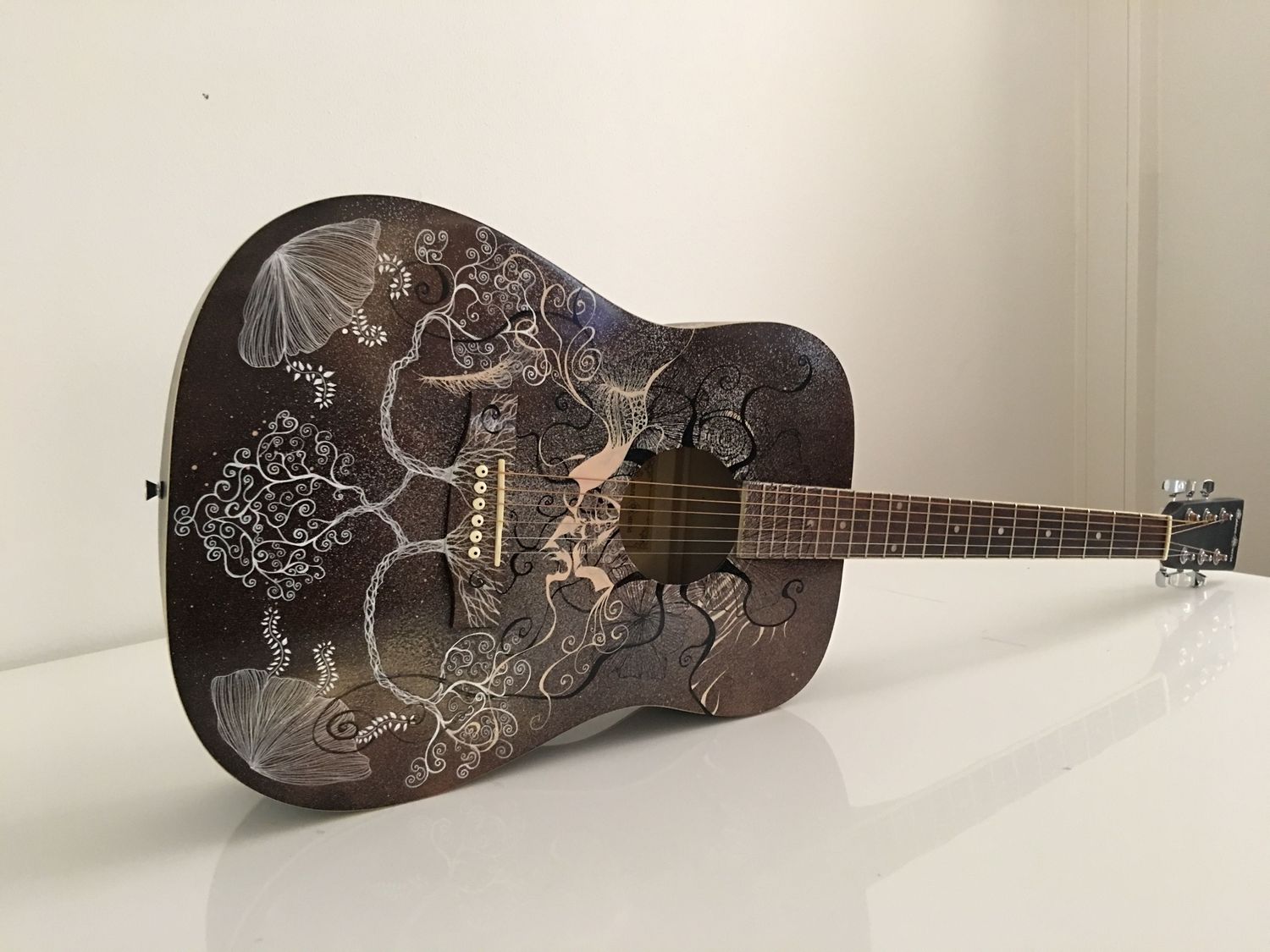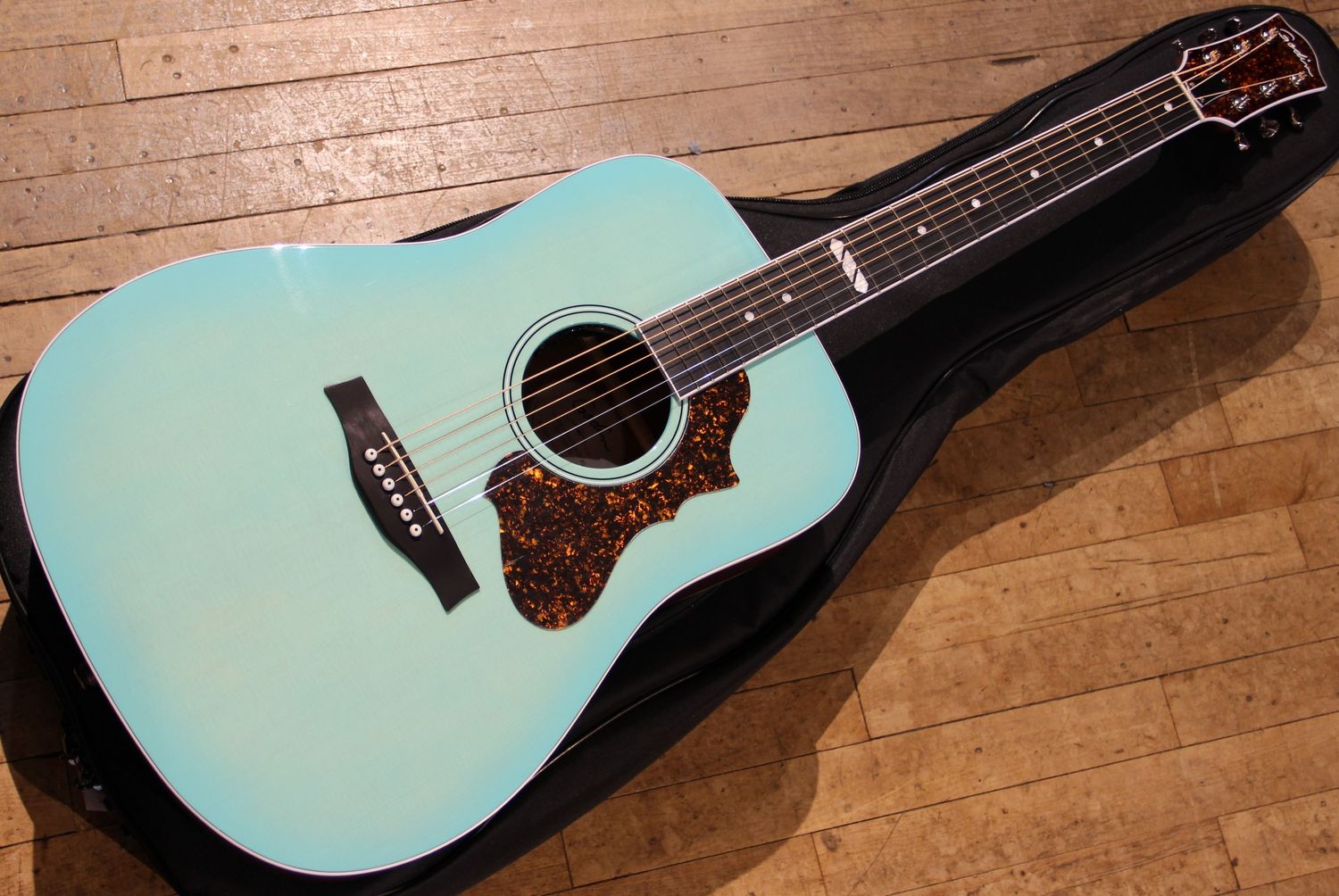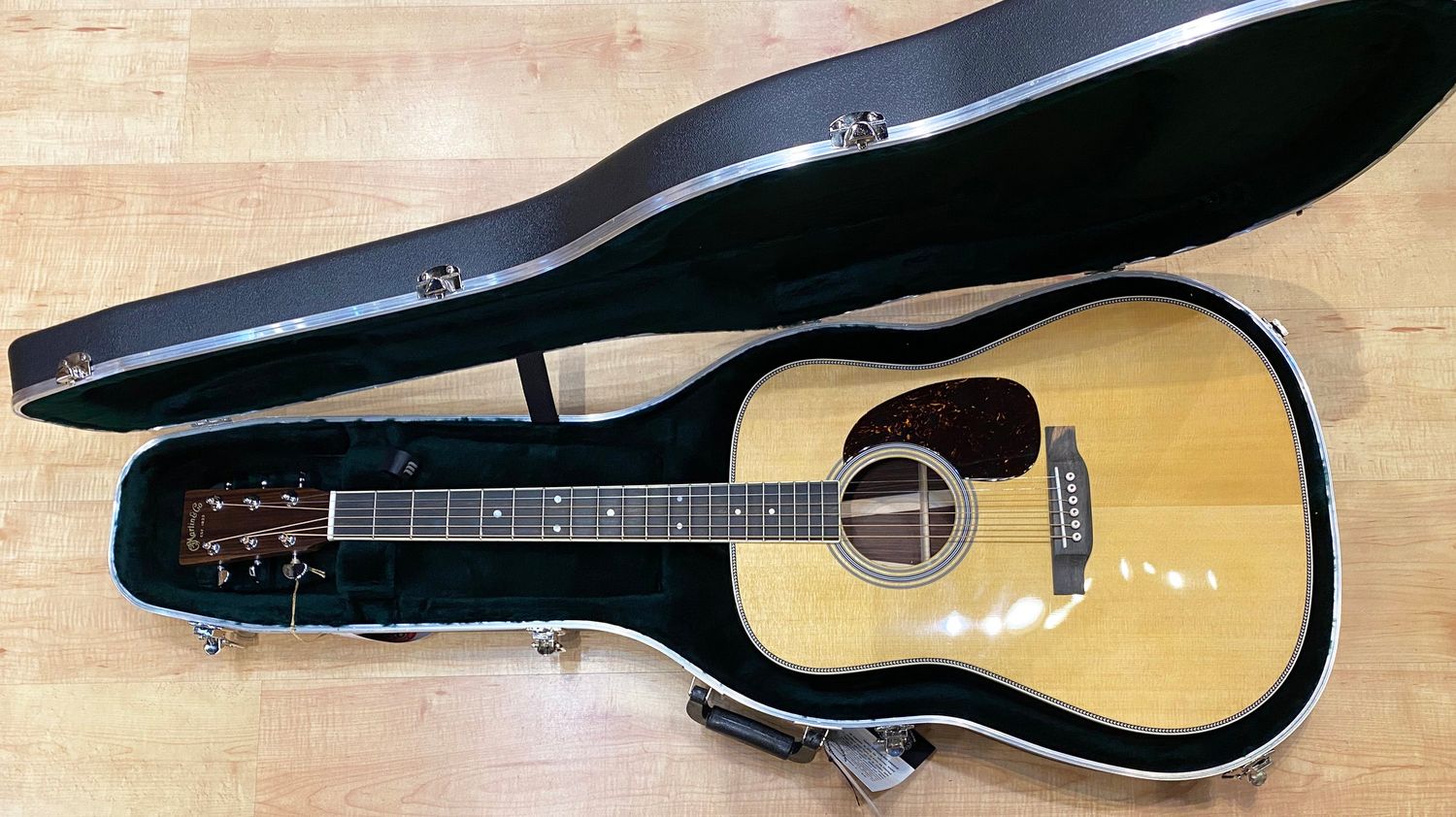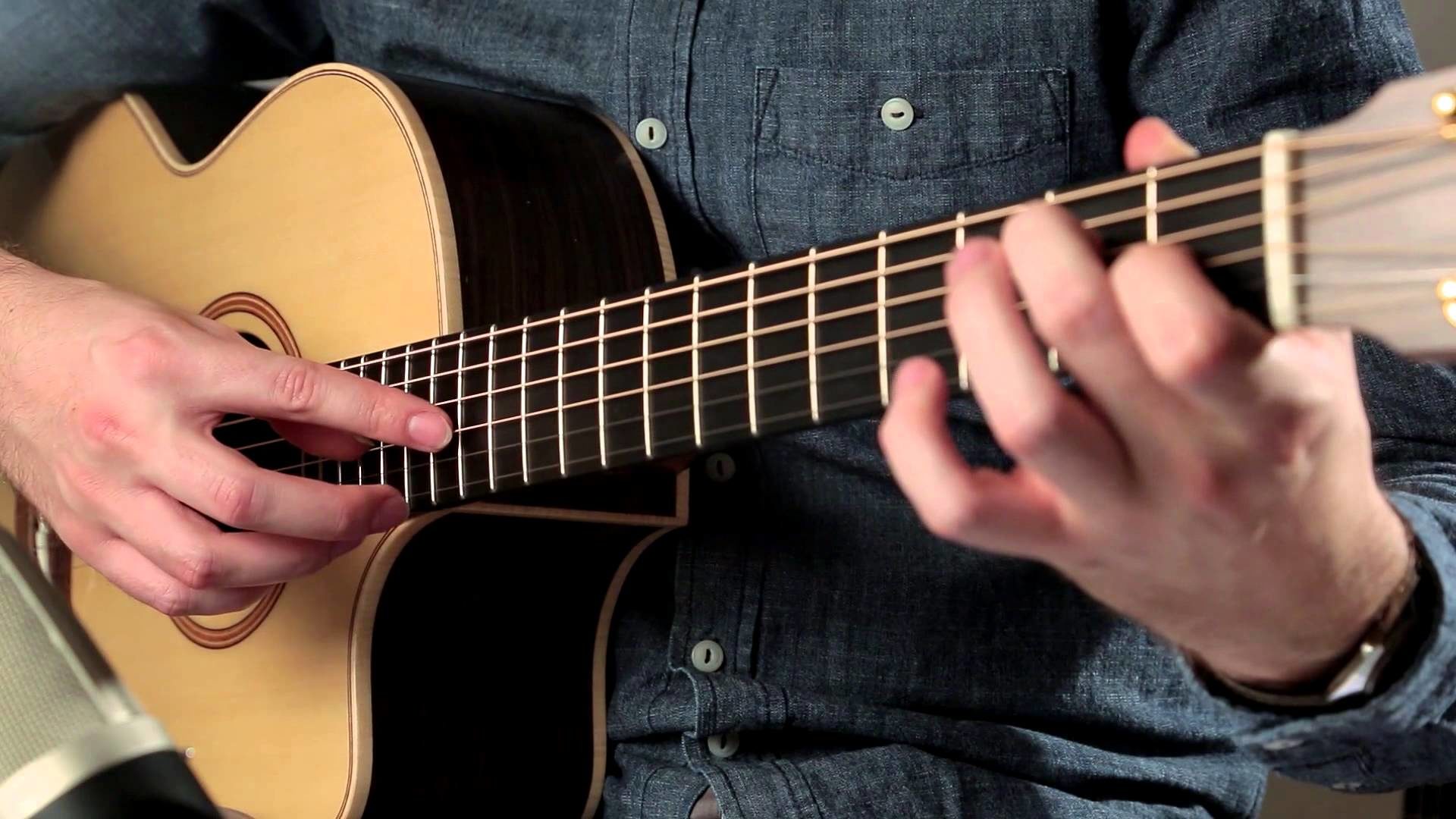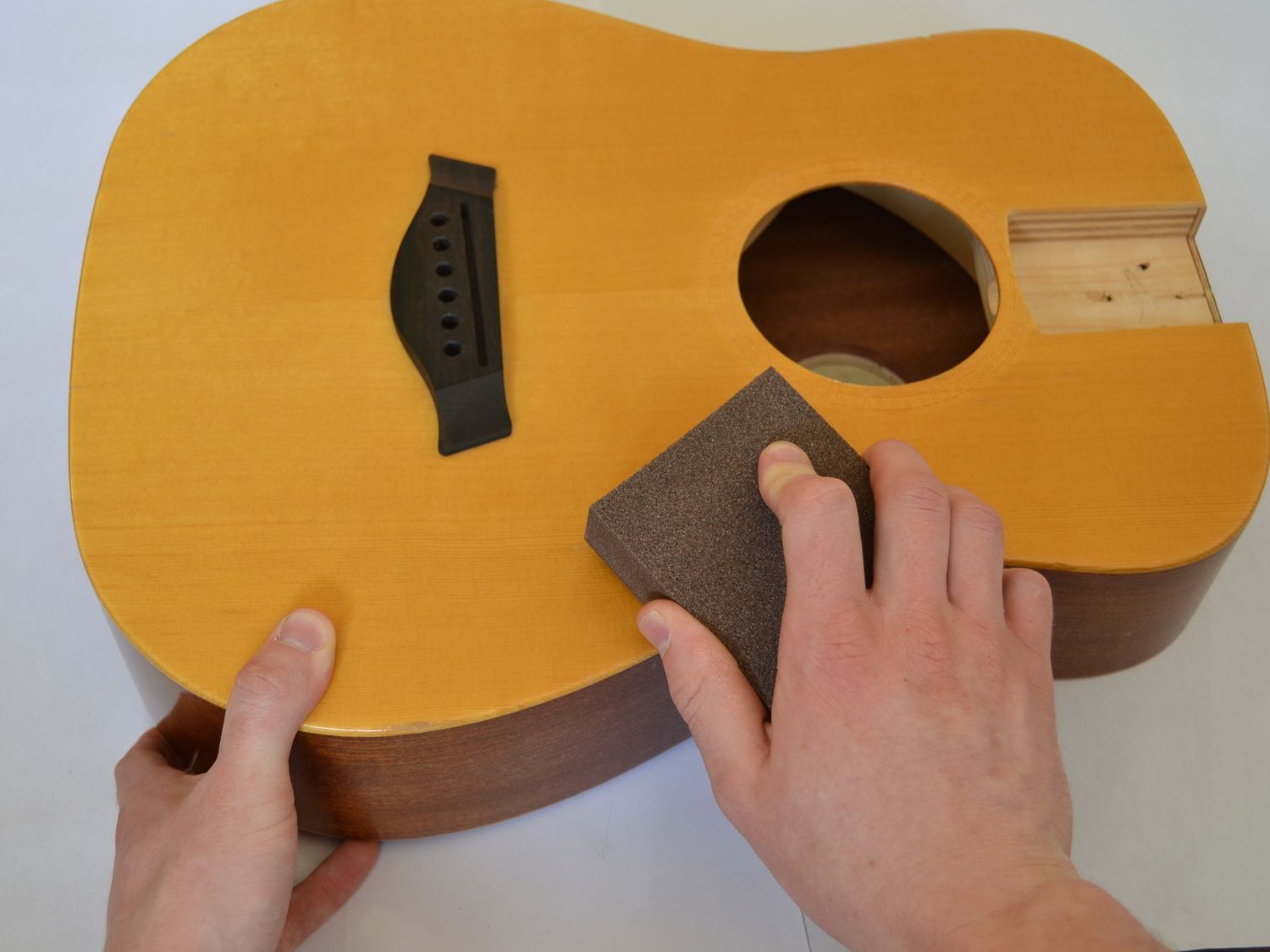Home>Production & Technology>Acoustic>How To Fix Acoustic Guitar Intonation
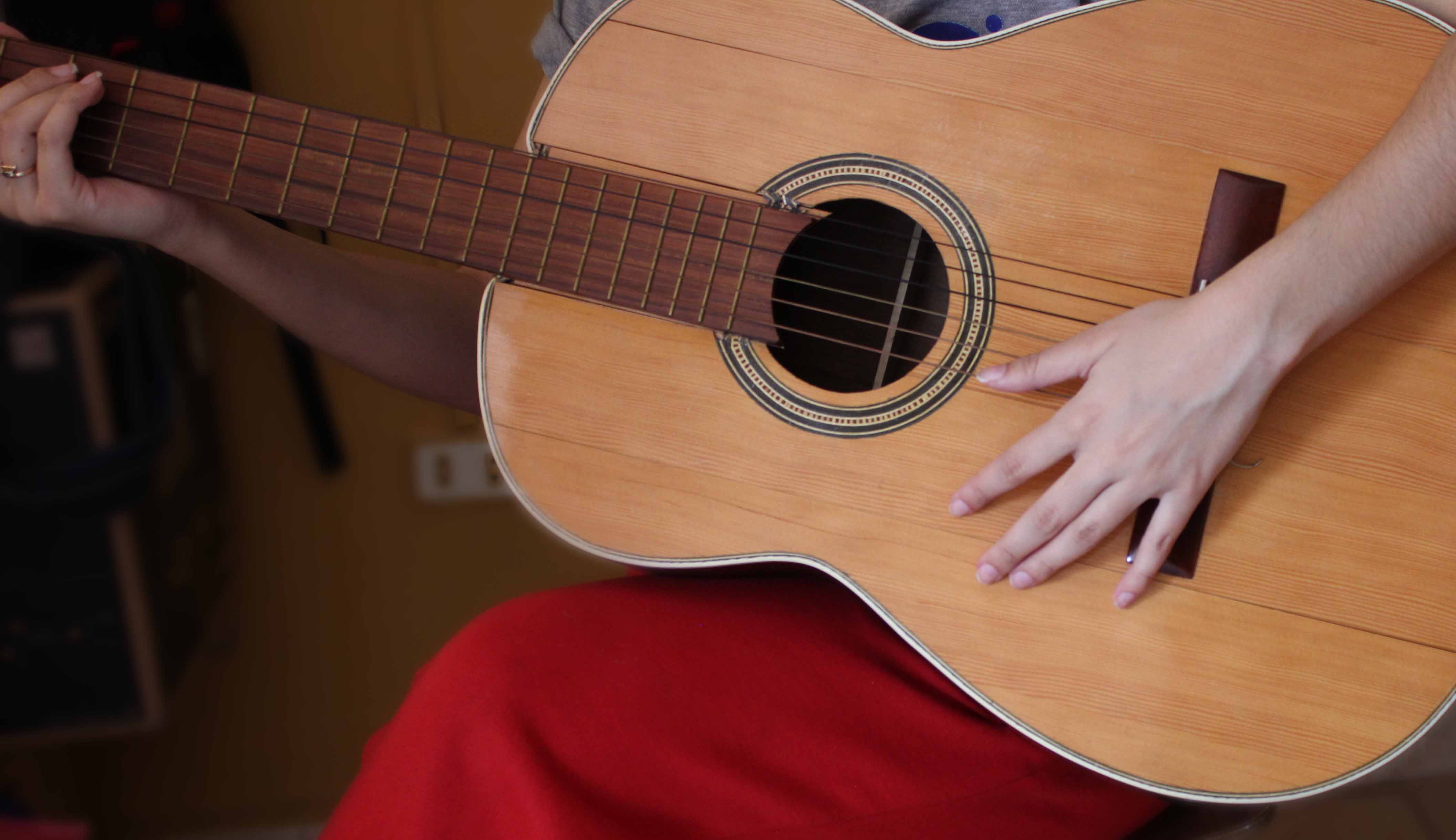

Acoustic
How To Fix Acoustic Guitar Intonation
Published: March 13, 2024
Learn how to fix acoustic guitar intonation with our step-by-step guide. Keep your acoustic guitar in tune and playing beautifully.
(Many of the links in this article redirect to a specific reviewed product. Your purchase of these products through affiliate links helps to generate commission for AudioLover.com, at no extra cost. Learn more)
Table of Contents
Introduction
Acoustic guitars are beloved for their warm, resonant tones and versatile playability. However, even the finest instruments can suffer from intonation issues, affecting the accuracy of the notes across the fretboard. Intonation refers to the guitar's ability to play in tune at every position on the neck. When the intonation is off, chords may sound sour, and individual notes may lack clarity and pitch accuracy.
Understanding and addressing intonation problems is crucial for any guitarist seeking to achieve a balanced and harmonious sound. Fortunately, with the right knowledge and tools, it's possible to rectify intonation issues and restore the guitar's optimal performance.
In this comprehensive guide, we will delve into the intricacies of acoustic guitar intonation, explore the tools required for intonation adjustment, and provide a step-by-step walkthrough to fix intonation issues. By the end of this article, you will be equipped with the expertise to enhance the playability and tonal precision of your acoustic guitar, ensuring that every note resonates with clarity and accuracy.
Let's embark on this journey to unravel the nuances of acoustic guitar intonation and equip ourselves with the skills to overcome this common challenge.
Understanding Intonation
Intonation is a critical aspect of a guitar's performance, directly influencing the instrument's ability to produce accurate and harmonious tones. It pertains to the guitar's capacity to play in tune at various positions along the fretboard. When a guitar's intonation is off, it can lead to discrepancies in pitch, causing chords to sound dissonant and individual notes to lack precision.
The primary factor affecting intonation is the length of the guitar strings. When a string is fretted, the effective length of the vibrating portion changes, impacting the pitch produced. If the length is not precisely adjusted, the resulting note may be slightly sharp or flat, especially when played higher up the neck. This discrepancy becomes more pronounced as the distance from the nut increases.
Another crucial element influencing intonation is the saddle position. The saddle serves as the endpoint for the strings and plays a pivotal role in determining their effective length. If the saddle is not correctly positioned, it can lead to intonation issues, causing the notes to be out of tune as the player moves along the fretboard.
Furthermore, the gauge and type of strings used can also impact intonation. Heavier gauge strings may require different adjustments compared to lighter ones, and the material composition of the strings can influence their elasticity and tension, thereby affecting intonation.
It's important to note that intonation problems are not exclusive to acoustic guitars; electric guitars and bass guitars can also experience similar issues. However, the process of adjusting intonation on an acoustic guitar may differ slightly due to variations in bridge design and setup.
Understanding the intricacies of intonation empowers guitarists to identify and address potential issues, ensuring that their instrument delivers consistent and accurate tonal performance across the fretboard. By comprehending the interplay of string length, saddle position, and string characteristics, players can take proactive measures to optimize their guitar's intonation, ultimately enhancing the overall playing experience.
Tools Needed for Intonation Adjustment
To embark on the journey of adjusting the intonation of an acoustic guitar, several essential tools are required to facilitate the process effectively. These tools are instrumental in enabling precise adjustments to the guitar's setup, ensuring that the instrument resonates with accurate and harmonious tones across the fretboard.
-
Electronic Tuner: An electronic tuner is indispensable for intonation adjustment. It provides real-time feedback on the pitch of each string, allowing the player to determine whether the notes are in tune. This is crucial for assessing the accuracy of the guitar's intonation before and after adjustments, ensuring that the desired tonal precision is achieved.
-
Screwdriver Set: A set of screwdrivers, including both flathead and Phillips head varieties, is essential for making adjustments to the guitar's bridge and saddle. These tools enable precise manipulation of the saddle position, allowing for incremental changes to the string length and intonation.
-
Capo: A capo is a valuable tool for isolating specific sections of the fretboard during intonation adjustment. By using a capo to fret the strings at different positions, the player can assess the intonation accuracy across various segments of the neck, identifying any discrepancies that require adjustment.
-
Ruler or Measuring Calipers: Accurate measurements are crucial for determining the optimal string length and saddle position. A ruler or measuring calipers can be used to gauge the distance between the nut and the saddle, ensuring that the strings are set to the appropriate length for precise intonation.
-
String Winder and Cutter: While not directly related to intonation adjustment, a string winder and cutter are essential for replacing strings, which may be necessary as part of the overall setup process. Fresh strings contribute to improved intonation and tonal clarity, making these tools indispensable for maintaining the guitar's optimal performance.
-
Soft Cloth and Guitar Polish: Keeping the guitar clean and free from debris is essential for accurate intonation assessment and adjustment. A soft cloth and guitar polish can be used to maintain the instrument's cleanliness, ensuring that the strings and fretboard are free from any impediments that could affect intonation.
By assembling these essential tools, guitarists can embark on the intonation adjustment process with confidence, knowing that they have the necessary resources to optimize their acoustic guitar's tonal precision and playability. These tools, when used in conjunction with a methodical approach to intonation adjustment, empower players to achieve harmonious and accurate tones across the entire fretboard, elevating the overall musical experience.
Steps to Fix Acoustic Guitar Intonation
-
Assess Current Intonation: Begin by tuning the guitar to standard pitch using an electronic tuner. Once tuned, play each open string and compare it to the 12th fret harmonic. If the fretted note is sharp or flat in comparison, the intonation needs adjustment.
-
Locate the Saddle Adjustment Screws: Most acoustic guitars have a saddle with individual adjustments for each string. Use a small mirror to locate the screws beneath the saddle, as they may not be easily visible from the playing position.
-
Adjust the Saddle Position: Using a screwdriver, make incremental adjustments to the saddle position. For sharp notes, the saddle needs to be moved away from the neck, effectively lengthening the string. Conversely, for flat notes, move the saddle towards the neck to shorten the string length.
-
Check and Retune: After each adjustment, retune the string to standard pitch and recheck the intonation using the 12th fret harmonic. Continue making small adjustments until the fretted note matches the harmonic precisely.
-
Repeat for Each String: Proceed to adjust the saddle position for each string, following the same process of assessment, adjustment, and retuning. It's essential to approach each string methodically, ensuring that the intonation of every note is accurately aligned across the fretboard.
-
Test Open Chords and Barre Chords: Once the individual string intonation is adjusted, test open chords and barre chords across different positions on the neck. Listen for any discrepancies in pitch and assess the overall tonal balance. Make further adjustments if necessary to achieve consistent intonation across various playing styles and positions.
-
Fine-Tune as Needed: If minor discrepancies persist, fine-tune the saddle adjustments to achieve optimal intonation. Pay close attention to the interaction between open strings and fretted notes, ensuring that the guitar produces harmonious and accurate tones regardless of the playing technique employed.
By meticulously following these steps, guitarists can effectively address intonation issues, restoring their acoustic guitar's ability to produce precise and harmonious tones across the fretboard. This systematic approach, coupled with attentive assessment and adjustment, empowers players to optimize their instrument's intonation, enhancing the overall musical experience.
Testing and Fine-Tuning
After completing the adjustments to the saddle position and string length, it is crucial to thoroughly test the guitar's intonation across various playing scenarios. This phase involves assessing the instrument's tonal accuracy and making any necessary fine-tuning adjustments to ensure consistent intonation.
To begin the testing process, start by playing a series of open chords, such as G, C, D, and E major, along with their minor counterparts. Listen attentively to the harmonic balance of each chord, paying close attention to any signs of pitch discrepancies. A well-intonated guitar will produce chords that resonate with clarity and harmony, with no discernible variations in pitch across different positions on the neck.
Following the assessment of open chords, transition to playing barre chords across various fret positions. Barre chords, which involve fretting multiple strings with a single finger, provide a comprehensive test of the guitar's intonation, as they require uniform pitch accuracy across multiple strings. Pay particular attention to barre chords played higher up the neck, as intonation issues often become more pronounced in these regions.
As you play through different chord progressions and melodic phrases, listen for any instances of tonal inconsistency or dissonance. If you detect any discrepancies in pitch, it may indicate the need for further fine-tuning of the saddle adjustments. By systematically identifying and addressing any remaining intonation issues, you can refine the guitar's tonal precision and ensure that every note resonates with accuracy and clarity.
Throughout the testing and fine-tuning process, it's essential to maintain a meticulous and attentive approach, as subtle adjustments can significantly impact the overall intonation. Continuously retune the guitar using an electronic tuner after each fine-tuning adjustment, as even minor alterations to the saddle position can affect the string's pitch.
By iteratively testing and fine-tuning the guitar's intonation, you can achieve a balanced and harmonious tonal performance across the entire fretboard. This meticulous approach ensures that the instrument resonates with consistent pitch accuracy, empowering you to explore a diverse range of musical expressions with confidence and precision.
Conclusion
In conclusion, addressing acoustic guitar intonation issues is a fundamental aspect of maintaining the instrument's optimal performance and playability. By understanding the nuances of intonation and following a systematic approach to adjustment, guitarists can ensure that their instrument resonates with accurate and harmonious tones across the entire fretboard.
The process of fixing acoustic guitar intonation begins with a comprehensive assessment of the instrument's current intonation status. By comparing the fretted notes to the 12th fret harmonics, players can identify any discrepancies in pitch, laying the groundwork for targeted adjustments.
Utilizing essential tools such as electronic tuners, screwdrivers, capos, and measuring instruments, guitarists can methodically adjust the saddle position for each string. This meticulous process involves incremental changes to the string length, fine-tuning the intonation to achieve precise alignment of fretted notes with their corresponding harmonics.
Following the adjustment process, thorough testing of the guitar's intonation is essential, encompassing the evaluation of open chords, barre chords, and melodic phrases across various fret positions. This comprehensive testing phase allows players to identify any remaining intonation issues and make further fine-tuning adjustments as needed, ensuring consistent tonal accuracy and clarity.
Ultimately, the journey to fix acoustic guitar intonation culminates in the restoration of the instrument's ability to produce harmonious and accurate tones, empowering guitarists to explore a diverse range of musical expressions with confidence and precision. By embracing the intricacies of intonation and leveraging the tools and techniques outlined in this guide, players can embark on a transformative journey to optimize their acoustic guitar's tonal performance, enriching their musical endeavors and captivating audiences with resonant and harmonious melodies.

